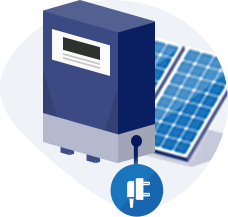
-
[email protected]

-
Building 1, No. 21 Shengfa Road, Lucheng District, Wenzhou, Zhejiang, China


The increasing demand for renewable energy has led to the development of various solar power solutions, each designed to meet specific needs and applications. Each type offers unique benefits and addresses different challenges in the deployment and management of solar energy.

Integrated PV systems represent a sophisticated approach to solar energy, where solar panels are seamlessly incorporated into the design and structure of buildings. This integration goes beyond traditional rooftop installations, with solar panels becoming an integral part of the building envelope. Integrated PV systems can be found in various forms, such as solar shingles, solar windows, and solar facades, offering both aesthetic and functional benefits.
One of the primary advantages of integrated PV systems is their ability to blend seamlessly with the architectural design of a building. Solar shingles, for example, mimic the appearance of traditional roofing materials while generating electricity. This aesthetic integration makes solar power more appealing to homeowners and architects who prioritize the visual appeal of a building. Additionally, integrated PV systems can reduce the overall footprint of a solar installation, as they utilize existing building surfaces rather than requiring additional space.
Integrated PV systems also offer functional benefits. These systems can provide shade and insulation, contributing to energy efficiency beyond just electricity generation. For instance, solar windows can reduce heat gain during the summer while generating power, improving the overall energy performance of the building.
Moreover, integrated PV systems are designed for longevity and durability. They are built to withstand the same environmental conditions as the building itself, ensuring a long operational life. This durability, combined with the aesthetic appeal, makes integrated PV systems an attractive option for new construction projects and major renovations.
Modular solar power systems are designed to be easily assembled and expanded, allowing users to tailor the size and capacity of their solar installation to meet their specific needs.
One of the key benefits of modular solar power systems is their flexibility. Users can start with a small system and gradually expand it as their energy needs grow. This scalability makes modular systems cost-effective, as users can invest in additional capacity only when necessary.
Modular solar power systems also offer redundancy and reliability. In a modular setup, each panel or module operates independently, reducing the risk of system-wide failures. If one module is damaged or underperforms, it does not affect the entire system, ensuring consistent power generation.
On-grid solar PV systems are designed to work in conjunction with the electrical grid, providing a reliable and efficient solution for residential, commercial, and utility-scale applications. These systems generate electricity from solar panels and feed any excess power back into the grid, allowing users to offset their energy consumption and potentially earn credits or payments from utility companies.
One of the primary advantages of on-grid solar PV systems is their simplicity and reliability. The grid acts as a backup, providing power when the solar system is not generating enough electricity. This integration also allows users to benefit from net metering policies, where excess power fed into the grid can be credited against future energy consumption.
Integrated PV systems offer seamless architectural integration, combining aesthetic appeal with functional benefits. Modular solar power systems provide flexibility and scalability, allowing users to adapt their solar installations to changing energy needs. On-grid solar PV systems, on the other hand, offer simplicity and reliability by integrating with the electrical grid, ensuring a continuous power supply and contributing to a more sustainable energy future.
Your email address will not be published. Required field are marked*
